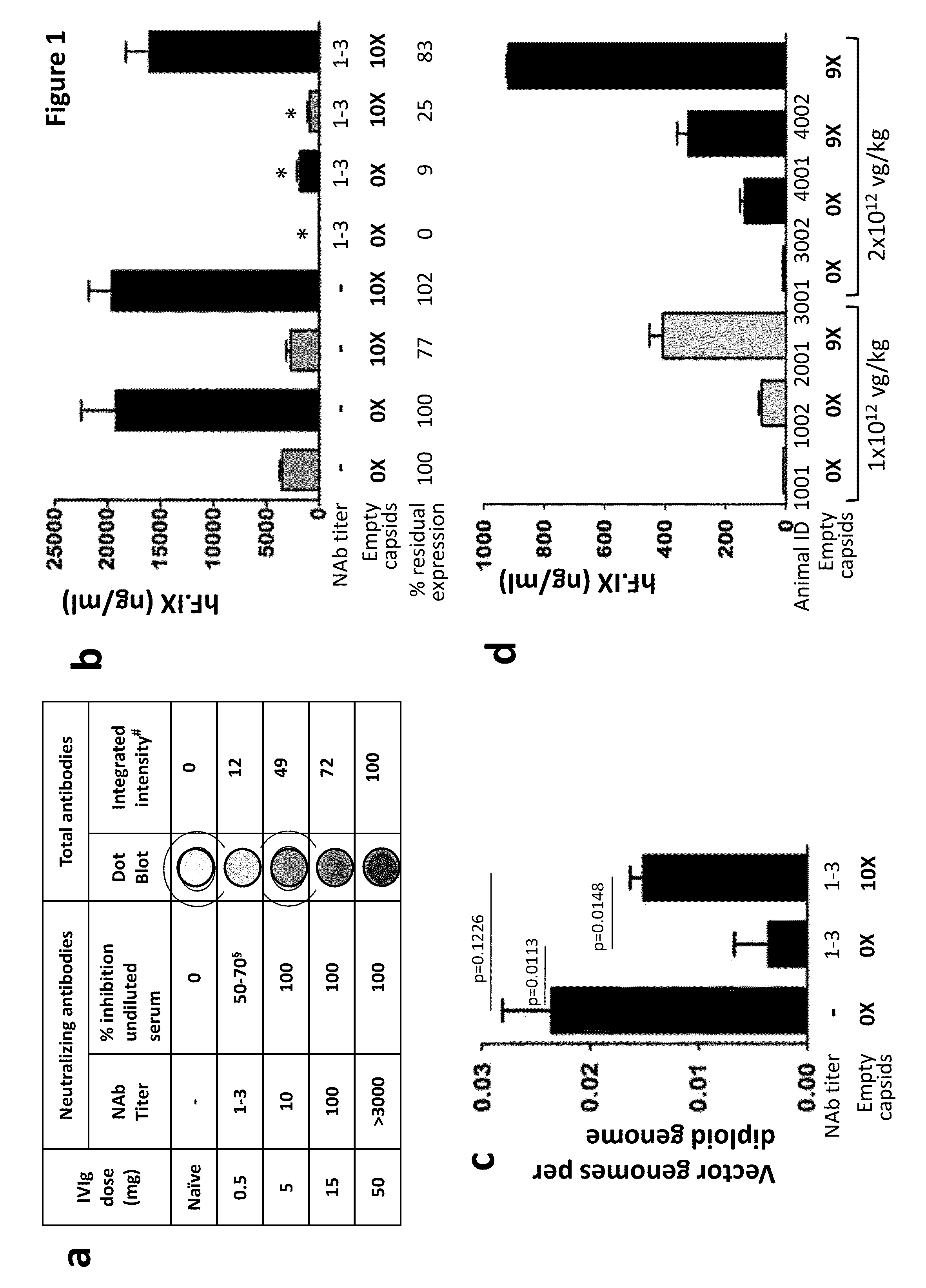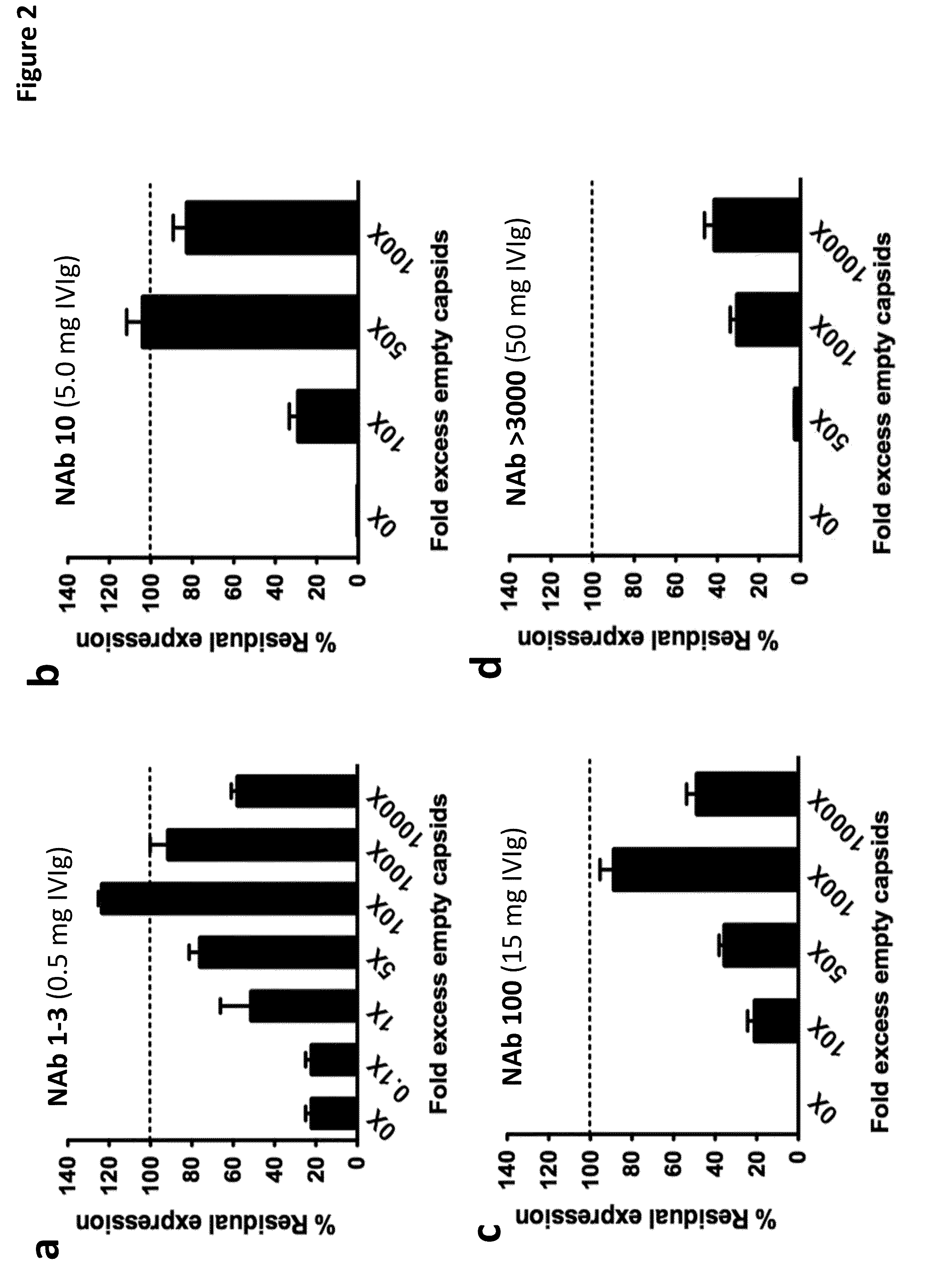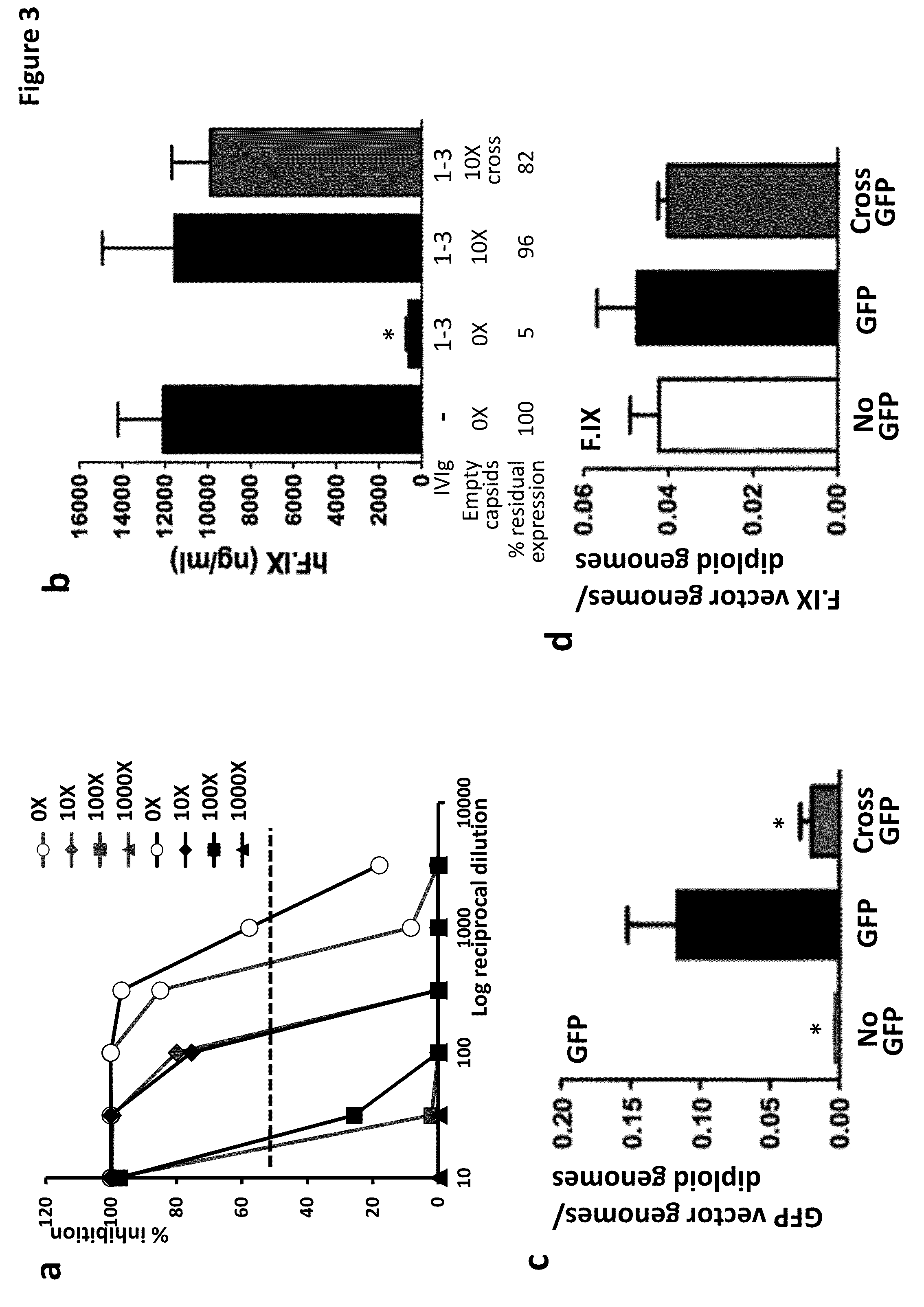Virus vectors for highly efficient transgene delivery
a virus and transgene technology, applied in the field of gene therapy and molecular biology, can solve the problems of limiting the therapeutic efficacy of aav vectors, limiting the amount of therapeutic polypeptides delivered, and viral transduction of the target, so as to achieve the effect of increasing cell transduction
- Summary
- Abstract
- Description
- Claims
- Application Information
AI Technical Summary
Benefits of technology
Problems solved by technology
Method used
Image
Examples
example 1
[0112]This example includes a description of various materials and methods.
[0113]AAV Vectors and Empty Capsids: AAV vectors were prepared as previously described (Matsushita T., et al., Gene. Ther. 5, 938-945 (1998)). Genome-containing vectors and empty AAV capsid particles were purified by cesium chloride gradient centrifugation (Ayuso E., et al., Gene. Ther. 17, 503-510 (2010)). The AAV vectors used in the in vivo experiments expressed human F.IX under the control of a liver-specific promoter (Mann C. S., et al., Nat. Med. 12, 342-347 (2006)).
[0114]A flow chart of suitable purification steps is provided below.
[0115]Cross-Linking: AAV capsids were cross-linked with two distinct protocols. In one protocol, 1×1013 AAV particles per milliliter were incubated with a 1:200 dilution of 37% formaldehyde (Sigma) for 3 weeks at 4° C. on a rotating wheel. Formaldehyde in the samples was then neutralized by adding 3.75% (w / v) sodium metabisulfite (1:100). Vector was dialyzed in 1×PBS, filter...
example 2
[0199]This example includes a description of observations and analysis of patients treated with Factor IX gene therapy and the discovery that there was substantial variation in anti-AAV antibody titers despite the selection of subjects based upon low AAV antibody titer.
[0200]Subjects enrolled in the AAV2-F.IX liver study (Manno, C. S. et al. Nat Med 12, 342-347 (2006)) and AAV8-F.IX liver study (Nathwani, A. C. et al., New Engl. J. of Med. 365, 2357-2365 (2011)) had detectable levels of anti-AAV antibodies (Table 1; Manno, C. S. et al. Nat Med 12, 342-347 (2006); and Nathwani, A. C. et al., New Engl. J. of Med. 365, 2357-2365 (2011)). Subjects in both studies received similar vector doses; however, while in the AAV2 study none of the subjects in the low- (8×1010 vector genomes (vg) / kg) and mid- (4×1011 vg / kg) dose cohorts exhibited detectable levels of transgene expression (Manno, C. S. et al. Nat Med 12, 342-347 (2006)), subjects in the AAV8 trial had detectable levels of clotting ...
example 3
[0204]This example includes a description of animal studies demonstrating that formulating or delivering AAV vectors with an excess of AAV empty capsids, even in animals with high titers of AAV Nabs, resulted in rescue of transduction in vivo after AAV vector delivery even in the presence of anti-AAV antibodies.
[0205]To study the effect of empty capsids on the efficiency of transduction of AAV vectors in vivo empty capsids were formulated with AAV vectors. First, in vitro studies revealed that inclusion of empty capsids in AAV vector preparations greatly reduced neutralizing activity of human serum in vitro (FIG. 11).
[0206]Second, to study the effect of empty capsids on the efficiency of transduction of AAV vectors in vivo, a mouse a mouse model of anti-AAV antibody responses (Scallan C. D., et al., Blood. 107, 1810-1817 (2006)) (Figure la) was generated. An AAV8 vector expressing human F.IX (AAV8-hF.IX) was injected into naïve mice or mice that were immunized with a low dose of IVI...
PUM
| Property | Measurement | Unit |
|---|---|---|
| volume | aaaaa | aaaaa |
| hydrophobic | aaaaa | aaaaa |
| stability | aaaaa | aaaaa |
Abstract
Description
Claims
Application Information
 Login to View More
Login to View More - R&D
- Intellectual Property
- Life Sciences
- Materials
- Tech Scout
- Unparalleled Data Quality
- Higher Quality Content
- 60% Fewer Hallucinations
Browse by: Latest US Patents, China's latest patents, Technical Efficacy Thesaurus, Application Domain, Technology Topic, Popular Technical Reports.
© 2025 PatSnap. All rights reserved.Legal|Privacy policy|Modern Slavery Act Transparency Statement|Sitemap|About US| Contact US: help@patsnap.com



